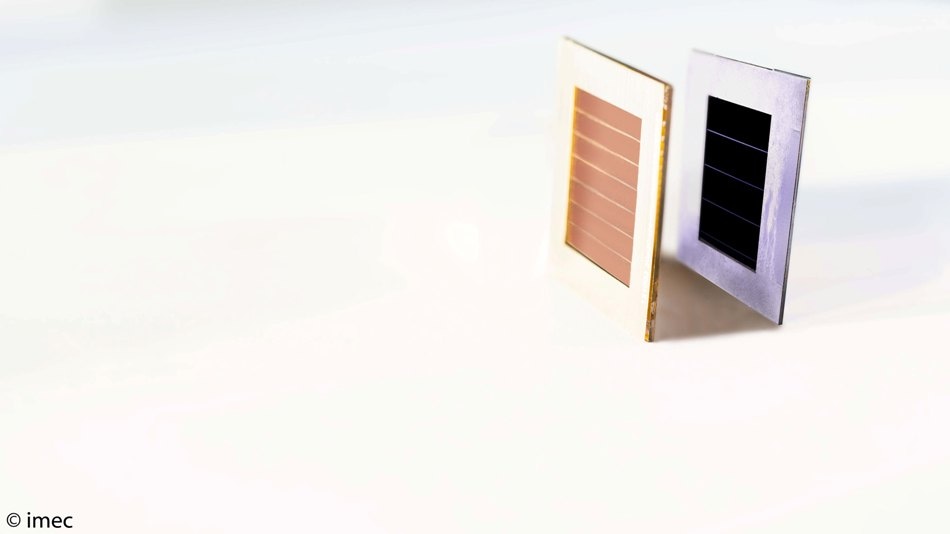Today, imec, the world-leading research and innovation hub in nanoelectronics, energy, and digital technology, unveiled its new tandem solar cell technologies, which pave the way to higher cell efficiencies of PV panels on roofs, as well as on vehicles or building-integrated applications such as solar cells in windows or facades. Tandem cells combine two types of solar cells applied on top of each other. Because each cell uses a different part of the sunlight spectrum, very high efficiencies beyond 30 percent can be achieved.

In its tandem cells, imec combines copper indium gallium selenide (CIGS) or silicon solar cells with perovskite, an innovative material that enables thin, transparent and cheap solar cells. As perovskite solar cells utilize the visible part of the light spectrum, they are ideally suited to combine with CIGS or Si solar cells, which utilize more the near-IR light portion of the spectrum instead. Tandem cells are therefore able to use sunlight more efficiently to produce electricity.
Imec’s perovskite/silicon cell combines imec’s 0.13cm² perovskite cell, developed within the Solliance collaboration, with a 4cm² silicon solar cell. The tandem cell achieves a conversion efficiency of 27.1 percent, which is higher than the best silicon solar cell (26.6 percent). Imec’s perovskite/CIGS cell combines the 0.13cm² perovskite cell with a 3.8cm² CIGS module developed by ZSW (Zentrum für Solare Energiewirtschaft). This tandem cell achieves 24.6 percent efficiency, which is also higher than the current leading CIGS solar cells in the industry (22.9 percent).
“According to the International Technology Roadmap for PV (ITRPV), tandem solar cells are expected to appear in the market in 2021,” stated Tom Aernouts, group leader thin-film PV at imec/Energyville. “At imec, we work on perovskite/silicon as well as on perovskite/CIGS tandems because each technology is directed towards different applications. For instance, silicon solar cells are especially suited for roofs and in solar cell parks, while CIGS thin-film solar cells can be produced on foils that could, in the future, be applied for building-integrated PV, turning facades and windows into electricity producers. We are pleased that our new perovskite-based tandem cell technologies will further enhance the capabilities of these solar cells towards 30 percent.”